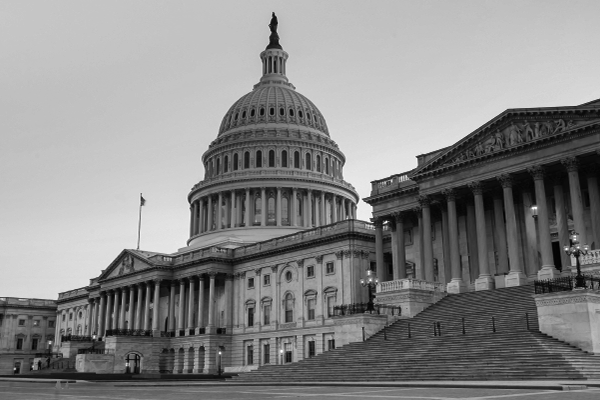AP Exposes 'Secret, Dirty Cost' of Federal Ethanol Mandate
All energy sources involve tradeoffs. Ethanol production, for example, requires vast amounts of farmland and additional use of fertilizer can contaminate water supplies. As a new Associated Press investigation uncovered, the environmental tradeoffs associated with ethanol production have intensified as the federal ethanol mandate has expanded. The AP explains:
With the Iowa political caucuses on the horizon in 2007, presidential candidate Barack Obama made homegrown corn a centerpiece of his plan to slow global warming. When President George W. Bush signed a law that year requiring oil companies to add billions of gallons of ethanol to their gasoline each year, Bush predicted it would make the country “stronger, cleaner and more secure.”
But the ethanol era has proven far more damaging to the environment than politicians promised and much worse than the government admits today.
As farmers rushed to find new places to plant corn, they wiped out millions of acres of conservation land, destroyed habitat and contaminated water supplies, an Associated Press investigation found.
Passed by Congress in 2005 and expanded in 2007, the Renewable Fuel Standard (RFS) requires oil refiners to blend increasing amounts of biofuels into the U.S. fuel supply. Over the last five years, volume requirements under the RFS have risen from 6 billion gallons in 2008 to 16.55 billion gallons in 2013, the vast majority of which comes from corn-based ethanol.
The dramatic increase in mandated ethanol volumes has coincided with growing concerns about the environmental impacts of ethanol production. According to the AP, “Between 2005 and 2010, corn farmers increased their use of nitrogen fertilizer by more than a billion pounds.” Moreover, since 2009, “Five million acres of land set aside for conservation—more than Yellowstone, Everglades and Yosemite National Parks combined—have been converted on Obama’s watch.”
The Obama administration defends corn-based ethanol as a bridge fuel to greener biofuels. The RFS requires refiners to blend 36 billion gallons of biofuels by 2022, with a cap of 15 billion gallons on corn-based ethanol. So-called “next-generation” biofuels, such as cellulosic ethanol, are supposed to make up the difference. These next-generation biofuels are also supposed to be better for the environment than corn-based ethanol. But as the AP points out, cellulosic biofuel production has fallen woefully short of expectations.
In the case of ethanol, the administration believes it must encourage the development of next-generation biofuels that will someday be cleaner and greener than today’s.
“That is what you give up if you don’t recognize that renewable fuels have some place here,” EPA administrator Gina McCarthy said. “All renewable fuels are not corn ethanol.”
But next-generation biofuels haven’t been living up to expectations. And the government’s predictions on ethanol have proven so inaccurate that independent scientists question whether it will ever achieve its central environmental goal: reducing greenhouse gases.
Cellulosic ethanol plants existed in the U.S. 100 years ago, but because they were inefficient, they went out of business.[i] It wasn’t until last year that cellulosic biofuel was produced commercially again. As the following chart shows, EPA mandated 5 million gallons of cellulosic biofuel in 2010, yet not a drop was produced for commercial purposes. In 2011, EPA actually increased its mandate, but still no cellulosic was biofuel was produced. EPA raised the mandate to 8.65 million gallons the following year, though cellulosic producers eked out just 20,269 gallons. So far this year, a little more than 217,000 gallons have been produced, despite a mandate for refiners to blend 6 million gallons. Given this track record, the administration’s hope that cellulosic biofuels could play a significant part in reducing greenhouse gas emissions remains a pipedream.
After forcing refiners to blend millions of gallons of biofuel that were never produced, EPA then fined refiners millions of dollars for failing to blend fuels that did not exist. As a result, the American Petroleum Institute successfully challenged the 2012 mandate, with the D.C. Circuit Court declaring that EPA “let its aspirations for a self-fulfilling prophecy divert it from a neutral methodology.”
EPA is poised to once again mandate unrealistic cellulosic biofuel volumes. Despite consistently overestimating cellulosic biofuel production, a leaked draft proposal shows that EPA is considering raising the cellulosic mandate to 23 million gallons in 2014, a nearly fourfold increase.
Under federal law, EPA must adjust required cellulosic volumes “based on“ the Energy Information Administration’s (EIA) annual estimate of cellulosic biofuel production for the next year. EIA, however, has not released their projected cellulosic volumes for 2014. That means EPA’s leaked draft proposes almost quadrupling the cellulosic mandate next year apparently without considering EIA’s 2014 volume projection that the EPA’s cellulosic projection is supposed to be “based on.”
Given that the biofuel industry has failed for four years in a row to meet the EPA’s mandates, it seems unlikely that 23 million gallons is a realistic goal for next year. It is unreasonable to expect refiners to blend fuels that do not exist, and especially egregious to fine them for failing to comply with an unattainable mandate.
The history of U.S. ethanol policy exposes the unintended consequences of government intervention in energy markets. Since the RFS became law, millions of acres of land set aside for conservation have been converted to ethanol production. Meanwhile, refiners are forced to pay fines for failing to blend essentially non-existent “next-generation” biofuels that “haven’t been living up to expectations.” This does not even account for the fact that the RFS raises gasoline prices and damages vehicle engines. Though it may have been designed with good intentions, the RFS is an intrinsically flawed policy that has failed to make America “stronger, cleaner and more secure.”
IER Policy Associate Alex Fitzsimmons authored this post.
[i] See Barry D. Solomon, et. al., Grain and cellulosic ethanol: History, economics, and energy policy, 31 Biomass and BioEnergy 416 (June 2007).



